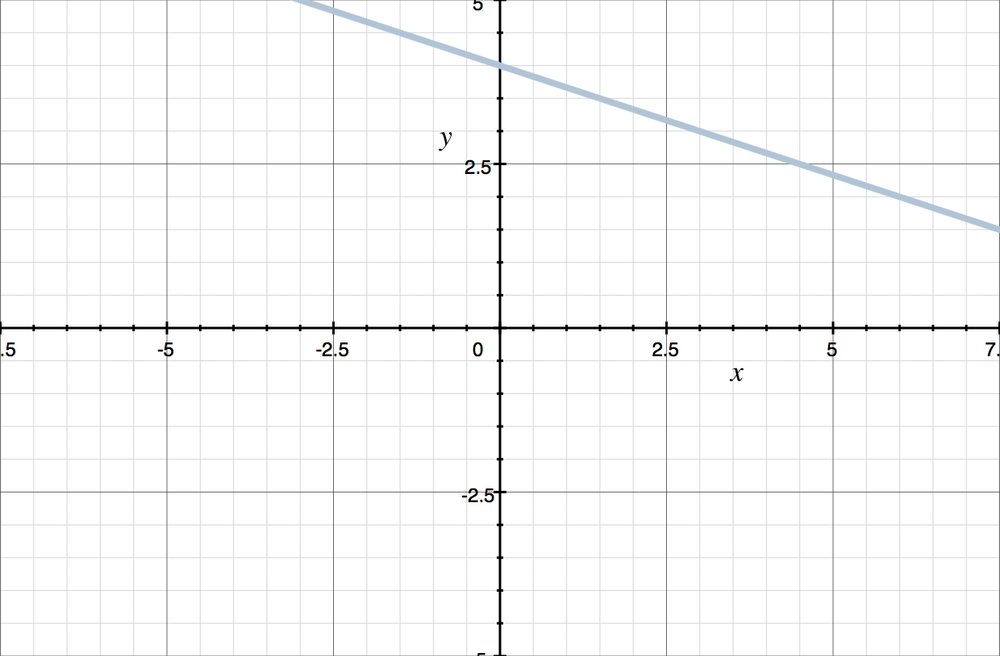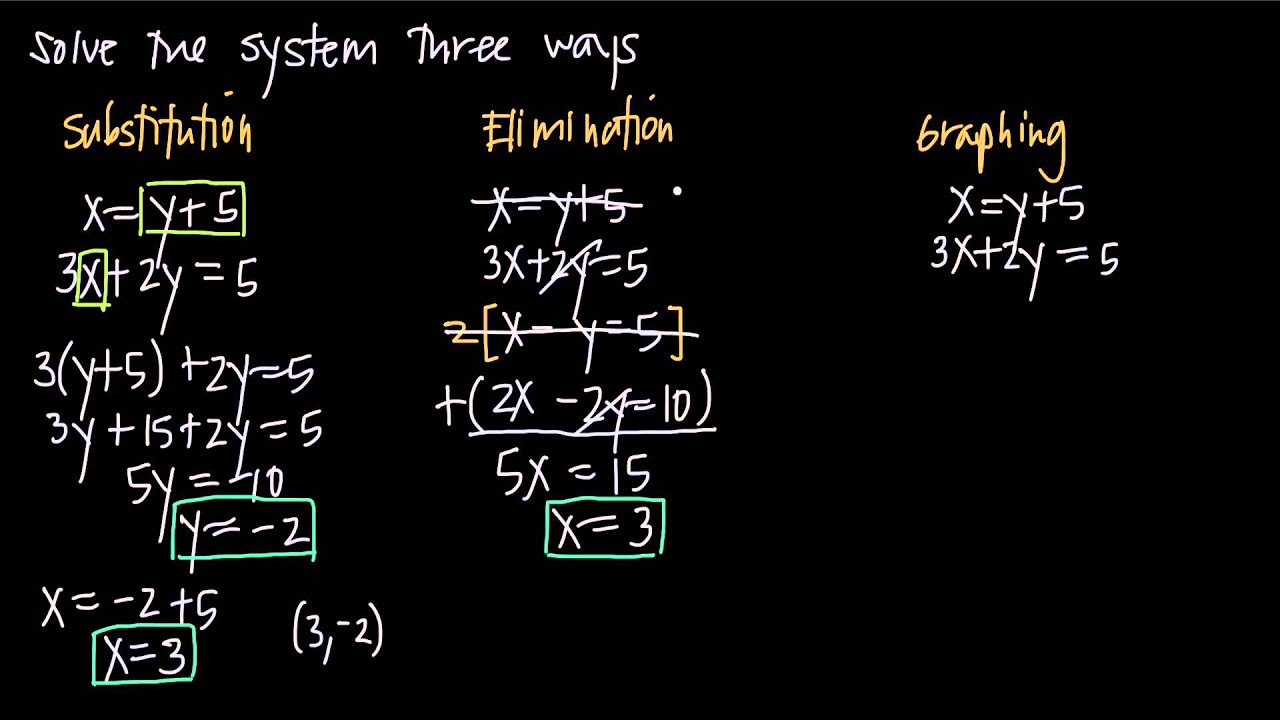There are always three ways to solve a system of equations
There are three ways to solve systems of linear equations: substitution, elimination, and graphing. Let’s review the steps for each method.
Substitution
- Get a variable by itself in one of the equations.
- Take the expression you got for the variable in step 1, and plug it (substitute it using parentheses) into the other equation.
- Solve the equation in step 2 for the remaining variable.
- Use the result from step 3 and plug it into the equation from step 1.
Elimination
- If necessary, rearrange both equations so that the xx-terms are first, followed by the yy-terms, the equals sign, and the constant term (in that order). If an equation appears to have no constant term, that means that the constant term is 00.
- Multiply one (or both) equations by a constant that will allow either the xx-terms or the yy-terms to cancel when the equations are added or subtracted (when their left sides and their right sides are added separately, or when their left sides and their right sides are subtracted separately).
- Add or subtract the equations.
- Solve for the remaining variable.
- Plug the result of step 4 into one of the original equations and solve for the other variable.
Graphing
- Solve for yy in each equation.
- Graph both equations on the same Cartesian coordinate system.
- Find the point of the intersection point of the lines (the point where the lines cross).
Determining which method is best for solving the system: substitution, elimination, or graphing
Now let’s look at a few examples in which we need to decide which of these three methods to use.
Example
Which method would you use to solve the following problem? Explain why you picked the method that you did.
x=y+2x=y+2
3y-2x=153y−2x=15
The easiest way to solve this system would be to use substitution since xx is already isolated in the first equation. Whenever one equation is already solved for a variable, substitution will be the quickest and easiest method.
Even though you’re not asked to solve, these are the steps to solve the system:
Substitute y+2y+2 for xx in the second equation.
3y-2(y+2)=153y−2(y+2)=15
Distribute the -2−2 and then combine like terms.
3y-2y-4=153y−2y−4=15
y-4=15y−4=15
Add 44 to both sides.
y-4+4=15+4y−4+4=15+4
y=19y=19
Plug 1919 for yy into the first equation.
x=y+2x=y+2
x=19+2x=19+2
x=21x=21
The unique solution is (21,19)(21,19).
How to solve a system using the elimination method
Example
To solve the system by elimination, what would be a useful first step?
x+3y=12x+3y=12
2x-y=52x−y=5
When we use elimination to solve a system, it means that we’re going to get rid of (eliminate) one of the variables. So we need to be able to add the equations, or subtract one from the other, and in doing so cancel either the xx-terms or the yy-terms.
Any of the following options would be a useful first step:
Multiply the first equation by -2−2 or 22. This would give us 2x2x or -2x−2x in both equations, which will cause the xx-terms to cancel when we add or subtract.
Multiply the second equation by 33 or -3−3. This would give us 3y3y or -3y−3y in both equations, which will cause the yy-terms to cancel when we add or subtract.
Divide the second equation by 22. This would give us xx or -x−x in both equations, which will cause the xx-terms to cancel when we add or subtract.
Divide the first equation by 33. This would give us yy or -y−y in both equations, which will cause the yy-terms to cancel when we add or subtract.
Let’s re-do the last example, but instead of the elimination method, use a graph to find the solution.
Solving the system by graphing both equations and finding the intersection points
Example
Graph both equations to find the solution to the system.
x+3y=12x+3y=12
2x-y=52x−y=5
In order to graph these equations, let’s put both of them into slope-intercept form. We get
x+3y=12x+3y=12
3y=-x+123y=−x+12
y=-\frac13x+4y=−31x+4
and
2x-y=52x−y=5
-y=-2x+5−y=−2x+5
y=2x-5y=2x−5
The line y=-(1/3)x+4y=−(1/3)x+4 intersects the yy-axis at 44, and then has a slope of -1/3−1/3, so its graph is

The line y=2x-5y=2x−5 intersects the yy-axis at -5−5, and then has a slope of 22, so if you add its graph to the graph of y=-(1/3)x+4y=−(1/3)x+4, you get


